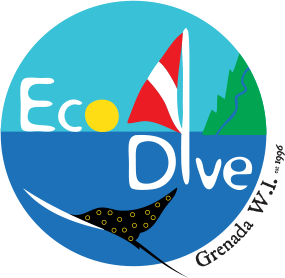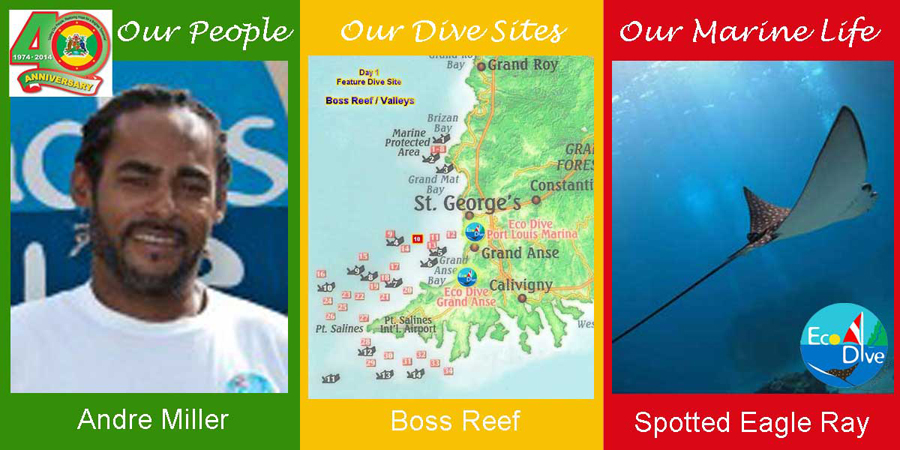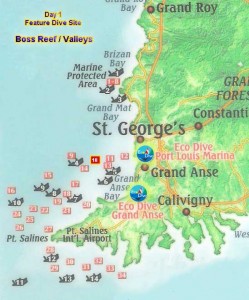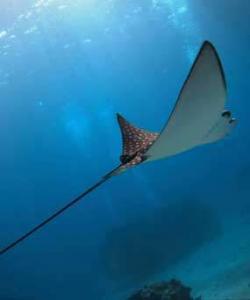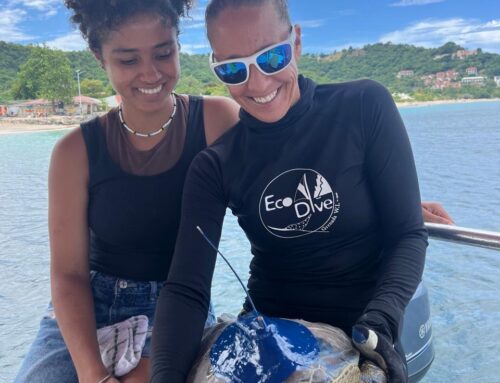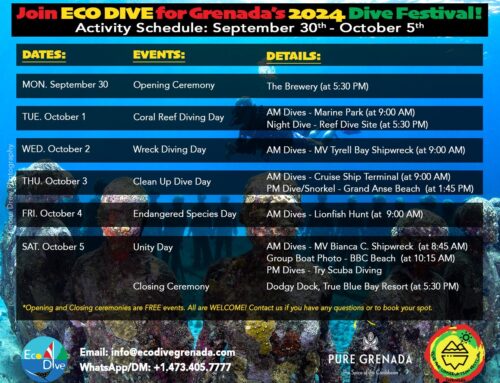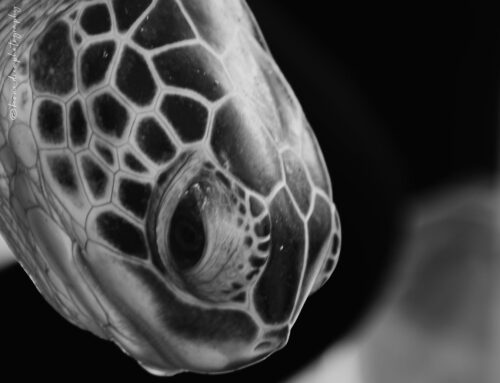In celebration of Grenada’s 40th Independence Day we will highlight a scuba diving site, a marine critter and one of our favorite friends and family every day for 40 days. So much to celebrate and so much to share! To kick the campaign off we would like to start from the beginning with some of the original roots of recreational diving in Grenada and a creature that has survived nearly unchanged over millenia in our oceans …
Our People – Andre Miller Company Director and Marine Biologist
Co-owner of Eco Dive with Christine, Andre a Grenadian now living in Barbados grew up a child of the sea and has committed his career, studies and businesses to the ocean and introducing new people to its beauty and resources. The visionary of Eco Dive Grenada, Andre has been instrumental in the re-development of Eco over the last few years and his love for Marine Science plays a big part in the vision behind and day to day operations of Eco Dive. Now based in Barbados, but seen in the Spice Isle often, Andre can be found at our sister dive centre Barbados Blue or running Marine Biology consultancy jobs or training through Carib Marine Contracting and Research. 
Dive Site – Boss Reef a.k.a. Valleys
This dive site is but one drop point on an extensive coral reef system which reaches up to 5 miles from the harbour at St Georges to the southernmost aspect of the island and offers a number of enjoyable dives. The upper reef, what we refer to as Boss Reef, is recignised by it’s reef fingers extending seaward between sand channels that lead to an abrupt yet shallow drop off to a sand ‘valley’. This reef is known to be home to Caribbean and Spiny Lobster, Spotted Moray eels, trunkfish, Creole Wrasse, Chubs and often a passing green or hawksbill turtle. Further along the reef, a series of sandy valleys demarcate the reef green moray eels are common. Amongst the plate coral look out for large crab and Banded Coral shrimp. On occasion a resting nurse shark or sting ray may be seen or the odd seahorse along the reef/sand habitat. With the drop point found at ~7 m / 25 feet yet the valley drop off reaching down to 18m/60 ft this dive site is ideal for all from beginners to underwater photographers to nice and relaxed second dive profiles.
Marine Creature – Spotted Eagle Ray
The spotted eagle ray (Aetobatus narinari) is a large ray found commonly in Grenada especially in the winter months . The body of a spotted eagle ray, not including the tail, can be over 8 feet long and with the tail can be 16 feet in length. These rays can grow to over 9 feet in width and the maximum recorded weight to date is 507 pounds. Eagle Rays have striking coloration of lighter spots or circles (white, yellow, bluish-white) against a black, dark gray or brown background of smooth skin. The pattern of spots on an eagle ray’s skin can be used by scientists to identify individual rays. The rays in Grenada tend to be quite black in colouring on their backs and we see a variety of spot and line patterns on their backs on a regular basis.
An Eagle Ray’s tail, much like a Southern Sting Ray, has a number of barbed spines at the base which it uses for defense, however these are very docile animals and typically shy away from divers – hopefully after we have gotten a good picture :). Their faces have a broad snout, large spiracles, and a duckbill-shaped lobe at the front of their head. They have a small dorsal fin and pelvic fins at the back end of their body.
Eagle rays are often seen in schools or do also spend time on their own. They are quite site loyal and return to the same locations often. They range from North Carolina to Brazil and varieties are also found in the Pacific Ocean. With a primary diet of shellfish and invertebrates the Eagle Ray was a shovel like snout used to dig in the sand and hard plates in their mouths for crushing prey carapaces and shells.
Spotted eagle rays are ovoviviparous meaning the eggs develop and hatch inside the mother’s body, and are nourished by a yolk sac. The gestation period is about 1 year and typical babies are born at 6-14 inches in length and in groups of 1 – 4 pups at a time. Predators to the Eagle Ray include the Great Hammerhead and Silvertip Sharks and threats include fishing, ghost fishing and parasites. (For more info see marinelife.about.com)
Eagle Rays are listed on the IUCN Red-List for near threatened species. We love seeing them in Grenada and have their symbol in our logo as one of the many many fascinating creatures we see on a regular basis.
